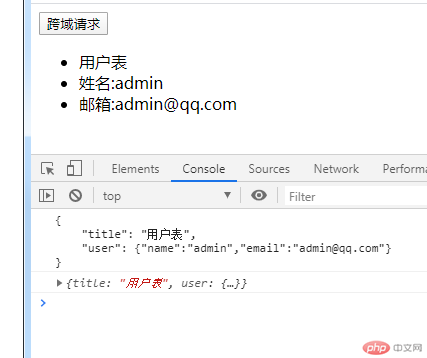教学内容
1. 跨域请求
1. CORS
CORS: 跨域资源共享CSRF: 跨站请求伪造
同源策略
多个页面的协议, 域名, 端口完全相同, 则认为他们遵循了”同源策略”
同源策略是一种安全机制
- 浏览器禁止通过脚本发起跨域请求, 如
XMLHttpRequest,但是允许通知 html 标签属性跨域
<!DOCTYPE html><html lang="en"><head><meta charset="UTF-8"><meta name="viewport" content="width=device-width, initial-scale=1.0"><title></title></head><body><button>跨域请求</button><h2></h2><script>// 获取按钮var btn = document.querySelector("button");// 给按钮添加点击事件btn.addEventListener("click",function(){// 创建监听对象var xhr = new XMLHttpRequest();// 监听请求xhr.onreadystatechange =function(){if(xhr.readyState === 4 && xhr.status === 200){console.log(xhr.responseText);// 将结果打印到h2元素中document.querySelector("h2").innerHTML=xhr.responseText;}};// 初始化请求参数xhr.open("GET","http://localhost/0415php/0522/test1.php",true);// 访问另一个服务器 http://localhost/0415php/0522/test1.php// 发送请求xhr.send(null);},false);</script></body></html>
- 其中,最重要的就是
Access-Control-Allow-Origin,标识允许哪个域的请求。 Access-Control-Allow-Origin有多种设置方法:- 设置
*,不安全开放式请求。 - 指定域,例如
http://js.edu - 动态设置为请求域
- 设置
<?phpheader("Access-Control-Allow-Origin:http://js.edu");echo "跨域测试";flush();
" class="reference-link">- 
2. JSONP
- 同源策略禁止通过脚本发起跨域请求, 但是允许通过标签和属性发起一个跨域
<!DOCTYPE html><html lang="en"><head><meta charset="UTF-8"><meta name="viewport" content="width=device-width, initial-scale=1.0"><title>Document</title></head><body><button>跨域请求</button><script>// 回调处理函数function handle(jsonData){console.log(jsonData);// 转为JS对象var data =JSON.parse(jsonData);console.log(data);// 将数据渲染到页面中var ul = document.createElement("ul");ul.innerHTML += "<li>" + data.title + "</li>";ul.innerHTML += "<li>姓名:" + data.user.name + "</li>";ul.innerHTML += "<li>邮箱:" + data.user.email + "</li>";document.body.appendChild(ul);}// 获取按钮var btn = document.querySelector("button");// 添加事件btn.addEventListener("click",function(){// 动态发起jsonp的跨域请求var script =document.createElement("script");script.src="http://localhost/0415php/0522/test2.php?jsonp=handle&id=1";document.head.appendChild(script);},false);</script</body></html>
<?php// json只支持utf-8header('content-type:text/html;charset=utf-8');// 获取前端传入的数据$callback = $_GET['jsonp'];$id=$_GET['id'];// echo $callback;// 用对象$users = ['{"name":"admin","email":"admin@qq.com"}','{"name":"ming","email":"admin@qq.com"}','{"name":"admin","email":"admin@qq.com"}',];// 检测是否存在if(array_key_exists(($id-1),$users)){$user =$users[$id-1];}$json ='{"title": "用户表","user": '.$user.'}';echo $callback . '(' . json_encode($json) . ')';
节点
- 节点:html文档中所有的内容都是节点
<!DOCTYPE html><html lang="en"><head><meta charset="UTF-8"><meta name="viewport" content="width=device-width, initial-scale=1.0"><title>Document</title></head><body><p style="color: red;">php.cn</p><form action="1.php"></form><form action="2.php"></form><form action="3.php"></form><!-- <form action="3.php" id="login"></form> --><form action="3.php" name="login"><input type="text" name="username" value="xxx" /></form><script>// 节点:html文档中所有的内容都是节点// 节点树:DOM树// 节点类型:元素、文本节点、属性节点、注释节点、文档节点// doctype html// console.log(document.doctype);// html ---html// console.log(document.documentElement);// head// console.log(document.head);// body// console.log(document.body);// console.log(document.forms[0]);// 通过ID拿// console.log(document.getElementById("login"));// console.log(document.forms.namedItem("login"));console.log(document.forms.namedItem("login").username.value);</script></body></html>
总结
- 了解跨域请求的方法、json只支持utf-8。
Access-Control-Allow-Origin的使用- 了解获取HTML文档中的各个节点


